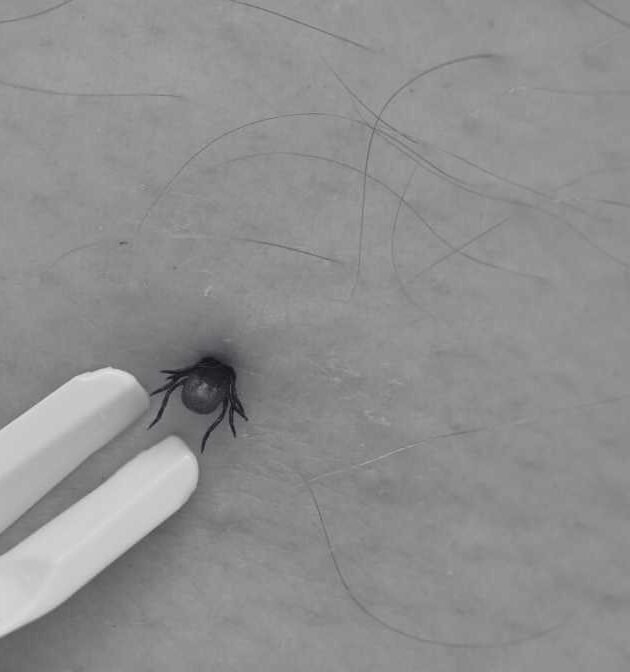
Best Mosquito Repellent Plants To Prevent Mosquitoes
May 28, 2025
The Rising Threat of Mosquito Borne Diseases in Malaysia
May 30, 2025
Mosquitoes Blog
The mosquito life cycle, comprising eggs, larvae, pupae and adults. Vital to understanding how these pests reproduce and spread disease.
Understanding the Mosquito Life Cycle, Eggs to Adult Mosquitoes in Malaysia
Mosquito Life Cycle: From Eggs to Adult Mosquitoes
Mosquitoes are vectors for some of the world's most serious diseases, including dengue, Zika, malaria and chikungunya. Understanding their lifecycle is essential for effective control and prevention. Especially in Malaysia’s tropical environment where their breeding conditions thrive. This article explores each stage of the mosquito life cycle, highlighting environmental factors.
Such as stagnant water and water temperature influence development. We delve into how female mosquitoes lay their eggs and the role of carbon dioxide in attracting them. Additionally, the importance of mosquito larvae and pupal case in the transformation from tiny eggs to flying adult mosquitoes.
From Eggs to Adult Mosquitoes and Their Impact on Your Health
The Complete Mosquito Life Cycle
The mosquito life cycle involves four distinct stages: egg, larva, pupa and adult mosquito. Each stage is crucial for the growth and reproduction of various species of mosquito. Understanding these can help us develop better mosquito control strategies.

Mosquito Eggs and Larvae: How They Develop and Breed in Malaysian Water Sources
1. Mosquito Life Cycle, Eggs: The Beginning of Life
The journey starts when the female mosquito searches for a suitable site to lay their eggs. Highly influenced by environmental factors like water temperature and stagnant water presence. The female mosquito gravitates towards areas with still, clean water. Often surface of water containers, puddles or drainage, ideal environment for mosquito eggs to survive.



How Mosquito Eggs Are Laid:
Mosquitoes lay their eggs either singly or in clusters called egg rafts on the surface of the water. The ability of eggs to survive dry periods varies among species of mosquito. For example, Aedes mosquito eggs can withstand dry conditions for months, while Culex eggs need water immediately for hatching. Once the water temperature reaches a certain level, typically 25°C to 30°C, the egg hatches into larva.
The Complete Guide to Mosquito Larvae and The Mosquito Life Cycle in Malaysia’s Environment
2. Mosquito Life Cycle, Larvae: The Growing Stage
Upon hatching, a tiny larva emerges and begins its mosquito life in the water. The larva lives below the surface of the water and feeds actively on organic matter, algae and microscopic organisms. This mosquito larvae stage is critical because it determines how many larva will develop into adult mosquitoes.



Development and Behaviour:
The larva undergoes several molts, shedding its skin in a process called molting, during three to four instar stages. During this period, the larva lives in stagnant or slow-moving water, where water temperature influences its development. Warmer water accelerates growth, shortening the larva’s mosquito life in this stage.
Oxygen Intake and Carbon Dioxide Attraction:
The larva breathes through a siphon at the surface of the water. Often expose to rising carbon dioxide emissions from humans and animals, which attracts female mosquitoes seeking a blood meal. As they live in water, mosquito larvae make excellent indicators of breeding sites.
What Do Mosquito Larvae Do?
They live underwater, feed on organic matter and grow through several molts.
Insights into Mosquito Eggs, Larvae, Pupae and Their Life Cycle in Malaysia
3. The Mosquito Life Cycle, Pupal Stage: Transition to Adulthood
After the larva has grown sufficiently, it molts into a pupa, non-feeding, resting stage call pupae or tumblers. The pupal case floats at or near the surface of the water and serves as the stage during which metamorphosis happens.



Development in the Pupal Stage:
While pupae do not live in water in the same way larvae do, they require oxygen and space at the water surface. This stage lasts approximately 1 to 4 days, depending on water temperature and environmental conditions. The pupa breathes through trumpets or tubes that extend from the pupal case.
Emergence of the Adult Mosquito:
Once development is complete, an adult mosquito emerges from the pupal case. It rests briefly to allow its wings to harden before flying away to seek a blood meal or mate.
Breeding Habits of Mosquitoes in Malaysia
4. Mosquito Life Cycle, Adult Mosquitoes: The Final Stage
The adult is the most recognisable stage and the one responsible for biting humans and animals. The female mosquito requires a blood meal to develop her eggs, which begins her reproductive cycle anew. The adult mosquito seeks out hosts, often guided by carbon dioxide emissions and body heat.



Mosquito Bites and Disease Transmission:
Adult mosquitoes bite humans and animals, injecting saliva that contains anticoagulants, which assist in blood feeding. During this process, if the mosquito is carrying disease-causing pathogens. Such as dengue, Zika, chikungunya, or malaria, it can transmit these to humans. Biting activity frequently occurs during dawn and dusk but can happen at any time in shade or humid environments.
Lifecycle Repetition
Once the female mosquito has taken a blood meal, she lays her eggs in suitable stagnant water after completing her blood meal. This process lays the foundation for another mosquito cycle, perpetuating the mosquito life cycle.
Mosquito Growth and Development: From Water to Air
Factors Influencing the Mosquito Life Cycle
Understanding environmental influences helps us manage breeding grounds effectively. Several factors determine how fast or slow the mosquito life cycle progresses:
Water Temperature
Higher water temperature accelerates development, causing mosquito eggs to hatch and larva to mature more quickly. Conversely, lower temperatures prolong each stage and can help reduce mosquito populations naturally.
Stagnant Water
Stagnant water, whether in flowering pots, abandon containers or clogged drains. They provide the perfect surface of the water for eggs and mosquito larvae to live in water. Standing water that remains undisturbed for days or weeks fosters mosquito larvae growth and adult mosquito emergence.
Organic Matter and Water Quality
Organic pollution promotes breeding of Culex species, while Aedes prefer cleaner, freshwater environments. The presence of organic matter influences how quickly larva feeds and develops.
Mosquito Development Stages, You Need To Know
Why Controlling the Mosquito Life Cycle is Crucial?
By targeting each stage, mosquito eggs, larva, pupa and adult. From stagnant water elimination to insecticide applications, communities can effectively break the mosquito life cycle. Such interventions significantly reduce mosquito bites and diminish the risk of disease transmission. Practical Measures Include:
Removing or covering standing water containers
Using larvicides in hidden breeding sites
Installing window and door screens
Using mosquito nets and repellents during peak activity hours
Educating the public about breeding site elimination
Life Cycle of a Mosquito and The Key Stages Explained
Impact on Human Health and Ecosystems
In Malaysia, where mosquitoes thrive because of warm climate and high humidity, the mosquito life cycle directly impacts health. Diseases transmitted by mosquitoes cause morbidity, mortality and economic burden. Reducing mosquito larvae development by disrupting the mosquito life cycle benefits public health immensely.
At an ecological level, mosquitoes are part of the food chain for birds, fish and other predators. Therefore, control efforts should also aim for environmentally friendly solutions that do not harm beneficial species.
Professional Mosquito Control Services
Innovative Pest Blog Summary
Understanding the mosquito life cycle is vital for effective control and prevention strategies, especially in Malaysia’s tropical environment. Various factors like water temperature and stagnant water influence development, making habitat management a key component in reducing mosquito populations. Most importantly, controlling mosquito breeding sites directly reduces mosquito bites and the risk of transmitting serious diseases. Communities can protect themselves from health threats cause by common insects.
Staying alert and with Innovative Pest Management control methods can keep you and your loved ones safe. Protect your home, safeguard your family and contribute to public health by understanding and disrupting the mosquito life cycle.



